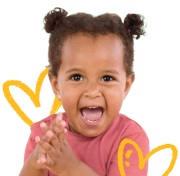
If you are raising babies, the struggle of potty training hits close to home. I can’t count the number of friends I have seen in tears as they face the day-to-day messes of teaching their toddler the art of the potty. If this is your season in life please, please don’t get discouraged. You will get there. I promise. But as you cross the valley, I wanted to share with you what has worked for us. Grab a lemonade and take note:
Your Baby Will Use The Potty When He is Ready
There is a season for everything. Potty training is about waiting and reading queues that may indicate readiness. Forcing your baby to use the potty is unnecessary and traumatic. Humans learn through imitation and familiarity. Expose them to the concept, teach them to be familiar with the objects, words and signs associated with evacuation and watch them thrive. .
Give Them The Words Needed to Play the Game
A baby can only use the potty if he can express the need to go potty. We made the signs for pee and potty a priority even when we were not ready to start potty training. A good way to start is to teach the sign for diaper to encourage your little one to ask for diaper changes and enjoy the comforts that come with cleanliness. As your baby grows and observes the world around them begin introducing the sign for potty, the sign for washing hands, the sign for clean and the sign for wet.
Have Fun!
Turn the whole thing into a positive experience. Play games, use gadgets and give rewards. There is no shame in making the best of a very difficult season in life. We always had a candy dispenser by the entrance of the bathroom. I also love the Cheerios aiming game!
Make Sure Everyone is in The Same Page
When mom, dad and all caregivers are reinforcing the same habits everything becomes easier. At our daycare they use the timing method allowing toddlers to have potty-time every 20 minutes. We duplicated the same method at home by singing and signing the potty song and marching to the potty to do our business.
Imitation Works
Gender imitation is perhaps the best and most reliable method of potty training. Ask an older brother or daddy to be the pee coach and create awesome rituals around mundane tasks such as washing hands together.
Rewards People. It is All About The Rewards
Before you tell me that you are not a materialistic parent and you refuse to use bribes consider the magic of praise and affection. A celebratory song or a hug has as much value as a bunch of candy.
Go Commando
Every experienced parent will tell you that the commando approach works. In the absence of a diaper little ones are far more likely to seek out the potty to avoid soiling their bodies.
Screen Time
Yes please! We have not used this method in our home but many parents swear by it. Placing a potty in front of the TV and using regularly seems to do the trick for some.
Take Time Off for Potty Training
How about a potty staycation? If you are a busy parent and you continue to have issues of reinforcement consider dedicating a whole week to potty training. Your full attention and focus may just work wonders.
Hire a Local Potty Coach
I did not even know these people existed but they do. There are early childhood intervention professionals whose whole career is around potty training. For a fee they will come to your home and put together a plan that best matches the learning style of your little one. Yay for the experts!
If your baby is already signing all the potty-related signs you are well on your way to full potty training. Stop by and tell us your stories of success. If you are not signing yet why not get started using the awesome resources available in our baby sign language shop.









